PROGRAMME NOTES
J.S.Bach: English Suite No 6 in D minor
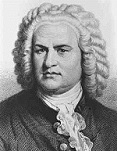
- Prelude
- Allemande
- Courante
- Sarabande
- Gavotte I
- Gavotte II
- Gigue
Bach’s English suites were composed during his period at Cothen (1717-1723) and together with his French Suites and later Partitas they bring to perfection the classical dance suite. They were not so titled by the composer but Bach’s biographer Forkel tells us they were written for an English nobleman, and the copy owned by Bach’s youngest son bears the inscription ‘fait pour les anglais’. Delightful features of the English suites are the doubles, or variations on individual movements (suites 2, 3 and 6 contain beautiful variations on the Sarabandes while Suite 1 features two doubles of the Courante). It is strange to note that some of Bach’s contemporaries resented these doubles on the grounds that they impinged on their own improvisatory skills, a reminder of the formidable standards of musical craftsmanship taken for granted at that time.
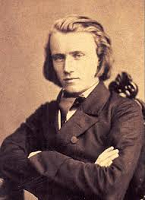
Brahms: Selection from Klavierstucke op. 76
- No 1 in F# minor Capriccio
- No 2 in B minor Cappriccio
- No 4 in B flat major Intermezzo
- No 5 in C# minor Cappriccio
After writing his Paganini Variations Brahms turned away from the composition of large-scale piano works in favour of masterly miniatures, often intimate in mood. Of some of the later intermezzi it has been remarked that 'even one listener is too many' but the Klavierstucke op 76 are outgoing in naure with plenty of pianistic panache. No 1 in F sharp minor is restless and brooding, a gypsy mood pervades the second while the fourth is lyrical and Schumannesque with dark undercurrents. The fifth is a passionate, turbulent affair, the drama intensified with far-flung modulations and complex cross-rhythms. That of the coda (5+5+5+6+6+3 quavers against 6+6+6+6+6 quavers) is particularly noteworthy and the right hand semiquavers gain additional effect both from the melodic accents on the 2nd, 6th and 10th and the return to 6/8 time, the climax having been deceptively written in 2/4 time giving the effect of quadruplet semiquavers (four against six). The two's against three's of the opening (or 2+2+2 quavers against 3+3 quavers) is of the kind that musical pundits love to term a "hemiola" - a horrible word that sounds to me more like an abnormal condition requiring urgent medical attention than a common musical device. I must be wrong somewhere!
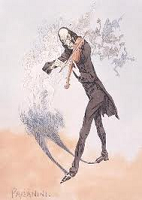
Romance in E minor.. .. .. Liszt
La Campanella.. .. .. Paganini/Liszt
The term “piano recitals” was first coined for Liszt’s 1840 concerts in London, the plural form suggesting each item was to be recited. This not only elevated the role of the performer from that of humble instruction-follower to that of musical messenger, it also breathed new life into the art of programme-planning. By including movements from Beethoven’s 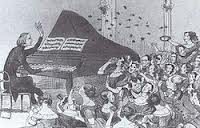 Symphonies and songs by Schubert at these concerts, Liszt’s musical persona extended to the very manner in which he arranged these works for the piano. His E minor Romance originated as a song written when he was touring Russia. The melody for La Campanella comes from the last movement of Paganini’s second violin concerto. Liszt made three transcriptions of this theme of which the third and most famous forms the third of his Grandes Etudes de Paganini. It is strange to note it is dedicated to Clara Schumann given the Schumanns’ frequent hostility towards Liszt. Was Liszt trying to build bridges? Earl Wild found it an appropriate dedication, given Clara’s tendancy to be ‘difficult’.
Symphonies and songs by Schubert at these concerts, Liszt’s musical persona extended to the very manner in which he arranged these works for the piano. His E minor Romance originated as a song written when he was touring Russia. The melody for La Campanella comes from the last movement of Paganini’s second violin concerto. Liszt made three transcriptions of this theme of which the third and most famous forms the third of his Grandes Etudes de Paganini. It is strange to note it is dedicated to Clara Schumann given the Schumanns’ frequent hostility towards Liszt. Was Liszt trying to build bridges? Earl Wild found it an appropriate dedication, given Clara’s tendancy to be ‘difficult’.
INTERVAL
Thomas Wakefield: Birthday Metamorphoses
(Variations on the famous theme “Happy Birthday to You” by Patty and Mildred J Hill)
A few years ago a friend suggested on the morning of his wife's birthday that I should prepare a few variations on the Happy Birthday song to play at lunchtime. I sketched out a few hopefully-amusing pastiches of various composers and since then I have had fun adding extra variations to make an entertaining concert item. The melody of "Happy Birthday to You" comes from the song "Good Morning to All", which was written and composed by American siblings Patty Hill and Mildred J. Hill in 1893. Patty was a kindergarten principal in Louisville, Kentucky, developing various teaching methods at what is now the Little Loomhouse; Mildred was a pianist and composer. The sisters created "Good Morning to All" as a song that would be easy to be sung by young children.The inspiration behind individual variations remains a secret so that listeners can have fun drawing their own conclusions as to which composres are being honoured…or pilloried.
Chopin/Balakireff: Romance from Piano Concerto in E minor
It’s impossible not to warm to the larger-than-life personality of Mily Balakireff who was (to coin a phrase) a greater composer than any of his works. A passionate disciple of Liszt who bullied and cajoled Tchaikovsky into writing his Romeo and Juliet Fantasy Overture, he would put his all into funding his latest musical project, whether it be promoting a series of concerts or opening a new music school and if it failed he’d always find a way of funding the next one even if it meant taking a job on the railways. His transcription of the Romance from Chopin’s E minor Concerto is a pure gem.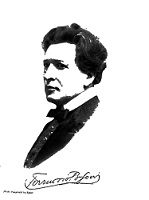
Liszt/Busoni: Fantasy on Two Motives from Mozart’s
“Marriage of Figaro”
Liszt began work on Fantasy on Two Motives of Mozart’s Marriage of Figaro in 1842 and performed it in Berlin the following year. Unlike the more protracted account of this piece published by the redoubtable Editio Musico Budapest, the present version makes a skilful précis of Mozart’s opera by focusing around two key arias, Non piu andras and Voi cha sapete. Sadly the manuscript remained incomplete and bereft of tempo markings and dynamics until the pianist with perhaps the greatest claim of all to be the pianistic heir to Liszt, Feruccio Busoni, took matters masterfully in hand .A little judicious pruning here and there, sixteen bars of scintillating bravura added at the close, and away he went on his concert tours with this infectiously good-humoured show-stopper. It was played and recorded by his own great pupil, Egon Petri, and championed by the legendary Vladimir Horovitz.